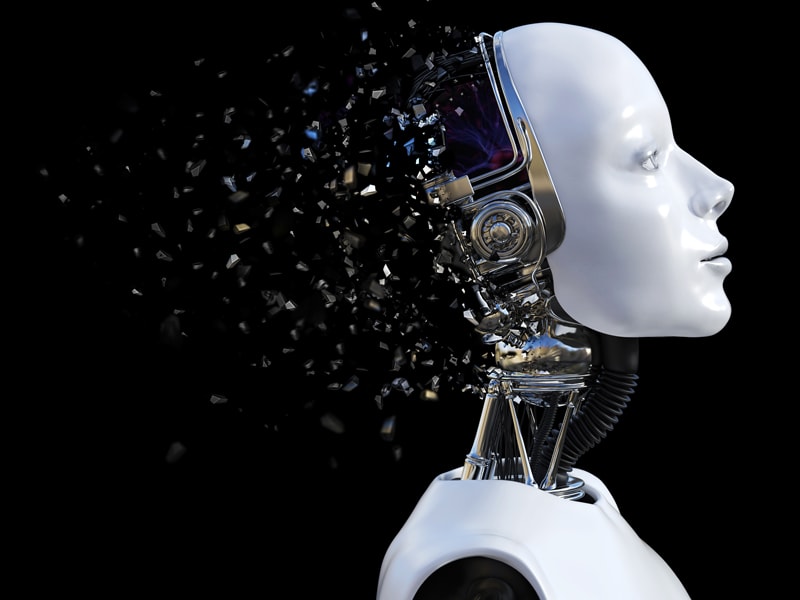
The beginning of this 21st century is accompanied by a growing wave of technological optimism that is reflected not only in technical advances and social changes, but also in futuristic currents of thought that opt for post-humanist and quasi-deterministic scenarios.
In the last decade and in the field of information technologies, although not only in these, a situation of accelerated technological evolution is being experienced, which some describe as exponential evolution and which raises unknown expectations of change that are worth considering.
In a historical analysis of the advance of technologies since the beginning of civilisation, it can be observed how, from the end of the 19th century, the rhythm of appearance of new technologies with a transforming impact on society and the economy has been increasing, currently reaching an apparently exponential rhythm.
In recent years, numerous studies have appeared that reflect the way in which scientific-technical advances have emerged throughout the history of humanity and the way in which they have impacted and transformed society.
From these studies it can be deduced that technological evolution behaves in an exponential way, from which it can be deduced that technological changes, and their impact, will be increasingly faster and more disruptive, as we have observed in recent decades.
Disruptive Technologies
Currently, the period of exponential evolution is taking place due to the convergence of the so-called emerging NBIC technologies. These technologies are giving rise to the promise of numerous advances at both a technical and social level, raising the appearance of new scenarios of growth and progress that will pose major challenges to humanity.
Nanotechnology is the technology that works in the nanometer range and, therefore, in the atom size environment, allowing the creation, modification and manipulation of matter at the atomic and molecular level. This technology makes it possible to create materials with very specific properties, opening up infinite possibilities in the fields of electronics, renewable energies and health, among others.
Nanotechnology is currently being applied in the creation of new materials: as in textiles, to include a sensor element, or in food packaging to improve food preservation. It is also being used in the administration of drugs, creating more precise systems for the release of active principles. The promise of future applications is very extensive and suggestive, especially in conjunction with robotics and biotechnology.
Biotechnology refers to any technological application that uses biological systems and living organisms or their derivatives to create or modify products or processes for specific purposes.
Depending on the field of application of the technologies, we speak of: red biotechnology (in medical processes), white biotechnology (in industrial processes), green biotechnology (agricultural processes), blue or marine biotechnology and grey biotechnology (applied to the maintenance of biodiversity). In the case of genetically modified organisms, we are talking about genetic engineering.
Cognitive science is the scientific study of the mind. It is an interdisciplinary field whose aim is to describe and understand the mechanisms behind cognition and psychological phenomena in general. More specifically, we speak of faculties such as consciousness, perception and emotion, attention, memory, reasoning, behavior, communication and language.
It is the scientific study of the mind and brain based on a multidisciplinary systemic approach that includes neuroscience, cognitive psychology, linguistics, philosophy of the mind and artificial intelligence.
Information technologies, which are well known to all of us, are experiencing an expansive era due to the convergence of increased computational and communication skills. The spread of cloud technologies, new advances in communication, 4G and the promising 5G.
Together with the emergence of artificial intelligence in various areas of society and industry are generating major advances and changes, such as, for example, in industry with the emergence of the paradigm of industry 4.0 .

The convergence of these technologies allows us to glimpse scenarios that some describe as technological and vital excellence where solutions to all problems are promised:
- Digitalised and hyper-connected world with artificial intelligence that simplifies processes and improves personal and professional experiences in any field.
- The invasion of robots and automatic systems in production lines, intelligent vehicles that will revolutionize transport and personal assistants that will improve our life experiences, especially for dependent people.
- New intelligent materials will appear with amazing capabilities that will facilitate the development of a sustainable, circular and ecological economy.
- The unstoppable development of personalized medicine that will allow, if not the eradication of diseases, the development of a preventive medicine and measure that will multiply life expectancy across the planet.
In short, the emergence of a prodigious scenario, a digital sky where thanks to emerging technologies all current problems will be solved and the future will be full of amazing and unexpected challenges.
Interpretations: Transhumanism
The emergence of all these disruptive technologies is generating currents of thought that predict a radical transformation of society in the economic and political spheres. This technological optimism is manifested in the emergence of a cultural and intellectual movement that promotes the transformation of the human condition.
Through the use of advanced technologies that help improve and overcome human limitations. This movement is called transhumanism and has, among others, as relevant exponents the philosophers Nick Bostrom, David Pierce and Max More.
Transhumanism is an intellectual and cultural movement that affirms the possibility and desirability of fundamentally improving the human condition through applied reason, especially by developing and making available technologies to eliminate aging and greatly improve intellectual, physical and psychological capacities.
Transhumanism advocates a technological solutionism based on the optimism generated by the convergence of emerging NBIC technologies.
Like humanists, transhumans give priority to reason, progress and values centred on our well-being, rather than on an external religious authority. Transhumanists understand humanism through a questioning of human limits through science and technology combined with critical and creative thinking.
Confidence in genetic techniques and biotechnology opens the door to studies on immortality and the goal of transcending the limits of current human life. Robotics and nanotechnology are presented as tools to overcome these limits through man-machine hybridization.
And in the belief in the progress of cognitive science, a commitment is made to generate a virtual copy of the human brain, breaking the physical barriers of evolution. In short, the idea is to go beyond the anthropocentric and species vision. Evolution does not have to stop at homo sapiens.
Technological Singularity
Among the different transhumanist currents, the theory of singularity promoted, among others, by the technologist Ray Kurzweil, Google’s engineering director, who, relying on the “law of accelerated returns” that predicts an increase in the rate of technological progress, proposes the following scenario.
Within a few decades, the intelligence of machines will surpass human intelligence, leading us to uniqueness (technological changes so rapid and profound that they represent a rupture in the structure of human history). Consequences include the emergence of biological and non-biological intelligence, immortal human-based software, and ultra-high levels of intelligence that will expand into the universe at the speed of light.
Based on the exponential growth of computational capacity, is that artificial intelligence will surpass human intelligence and that humans will be surpassed and/or replaced by autonomous machines and by a collective intelligence superior to that of present-day humanity.
In this case, it would be convenient to speak of a post-humanism, given that it is a current that advocates not for an improvement of humanity, but for a different species. According to the philosopher Luc Ferry, we could say that transhumanism is the path, while posthumanism is the objective; one is the path or the process, the other is the result or the point of arrival.
